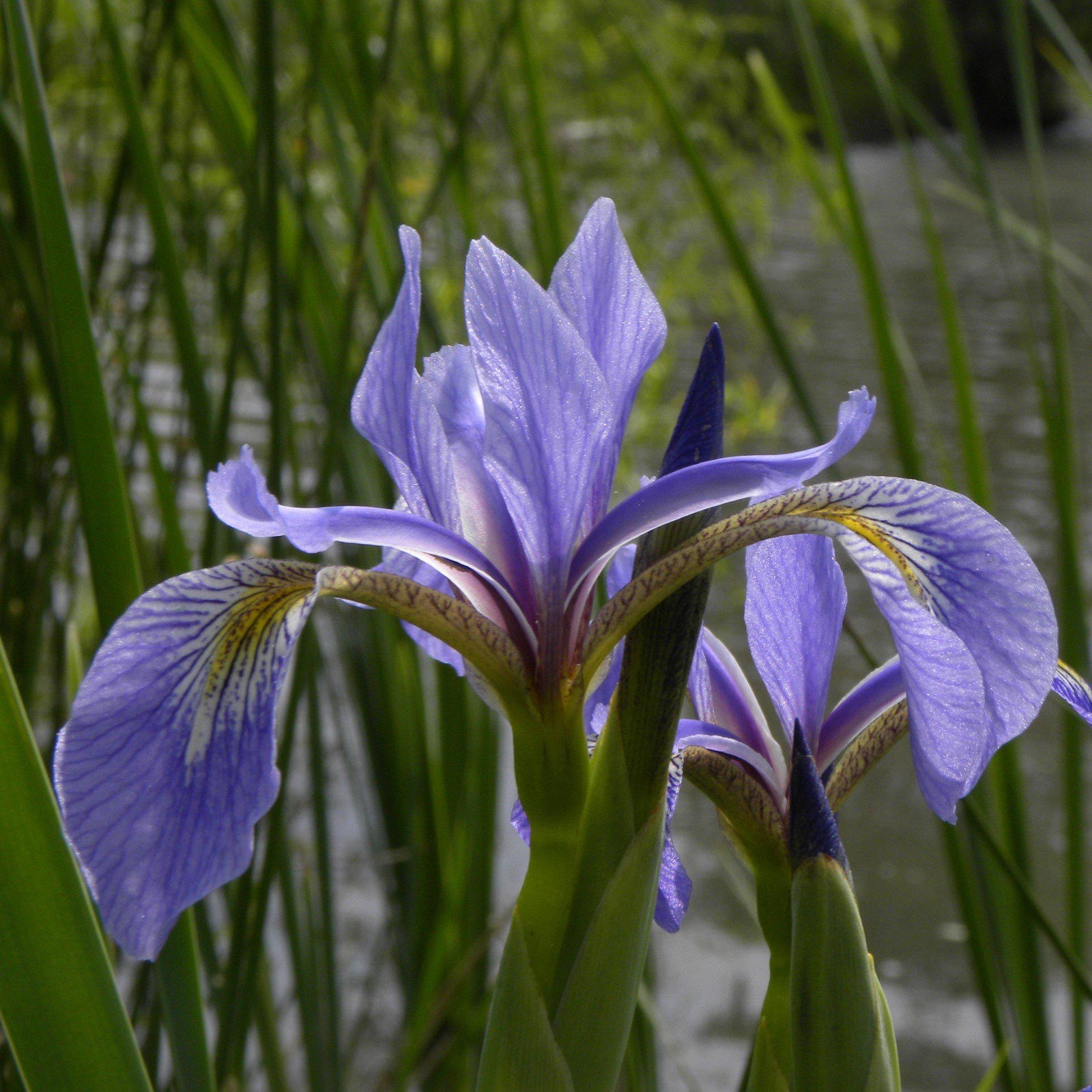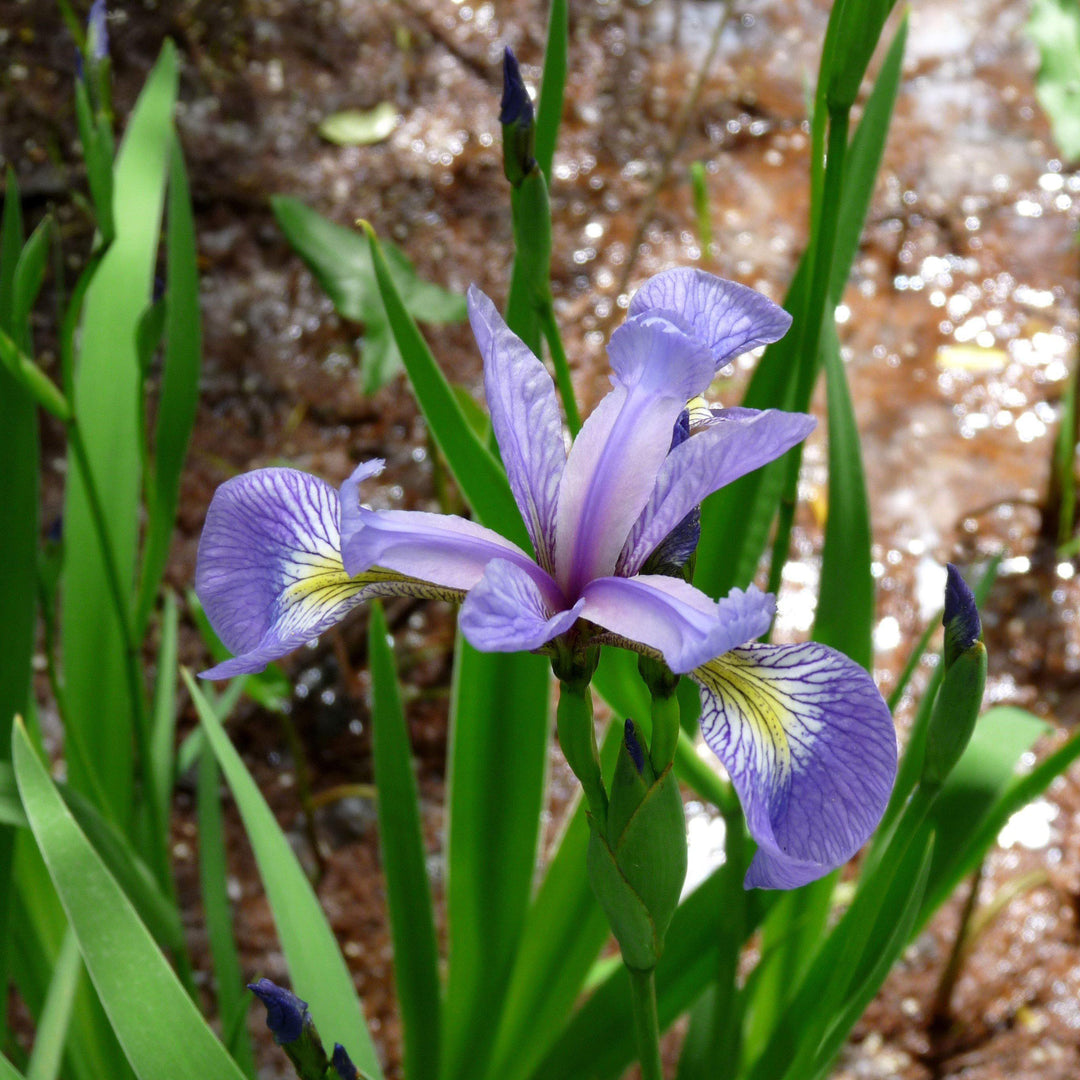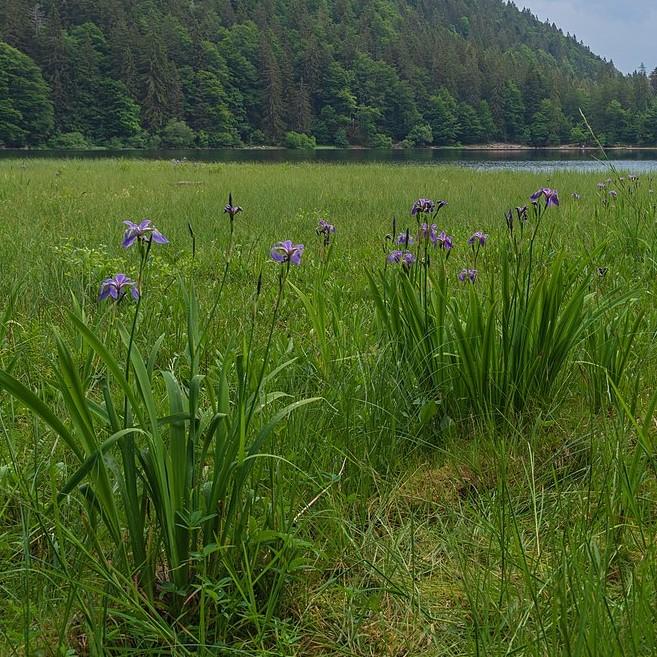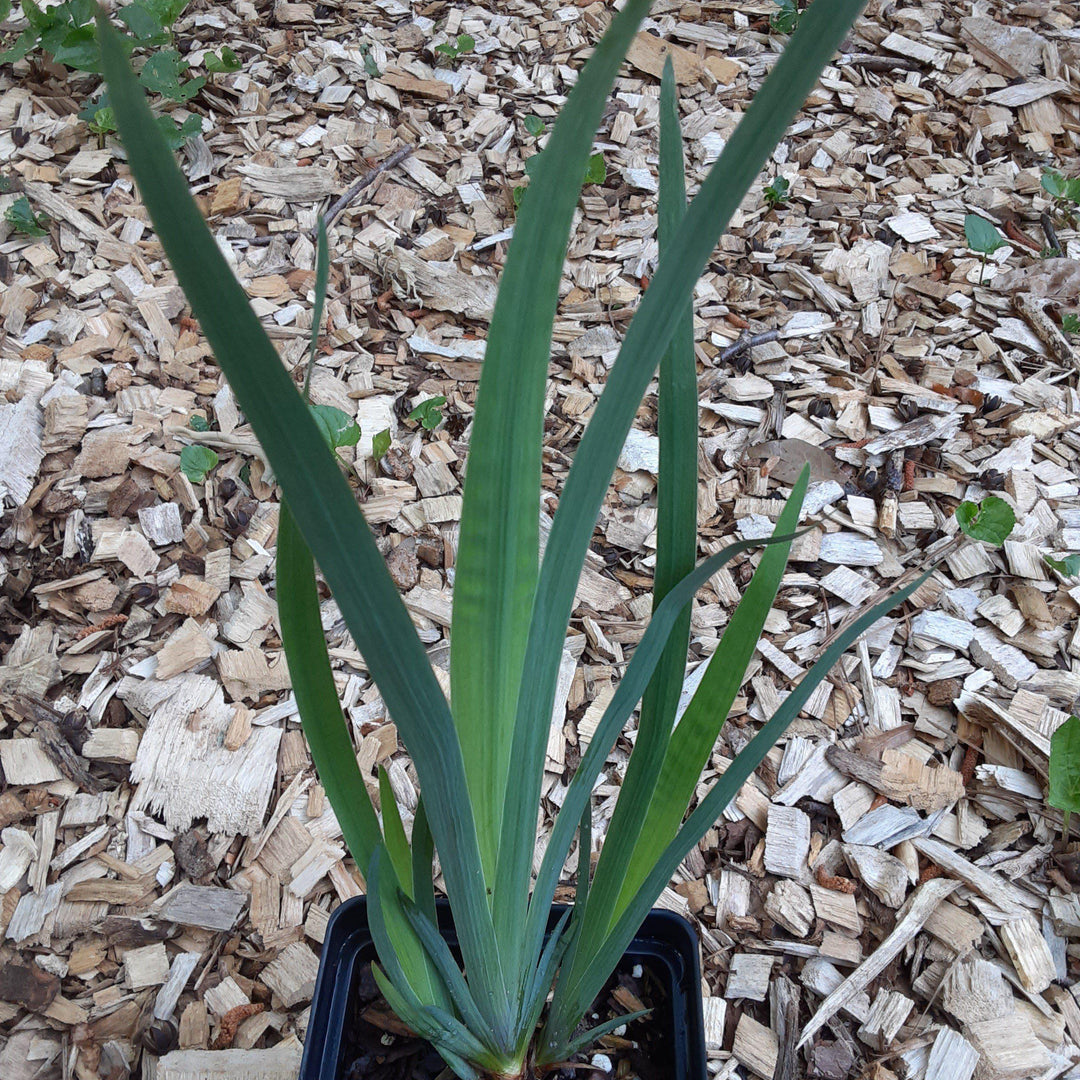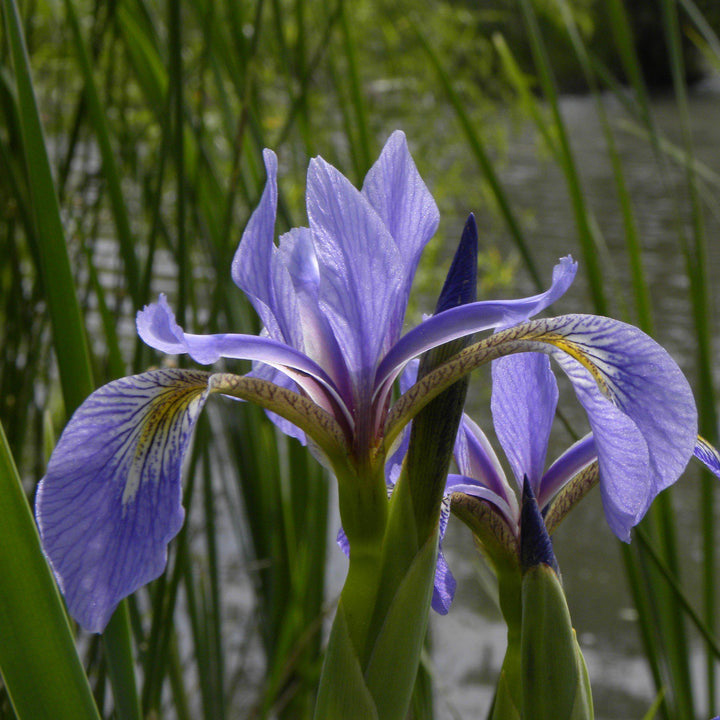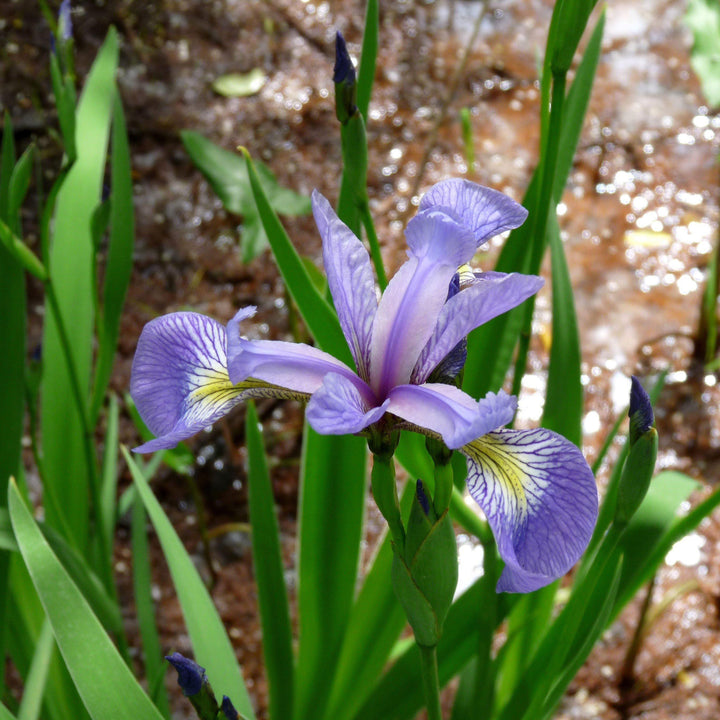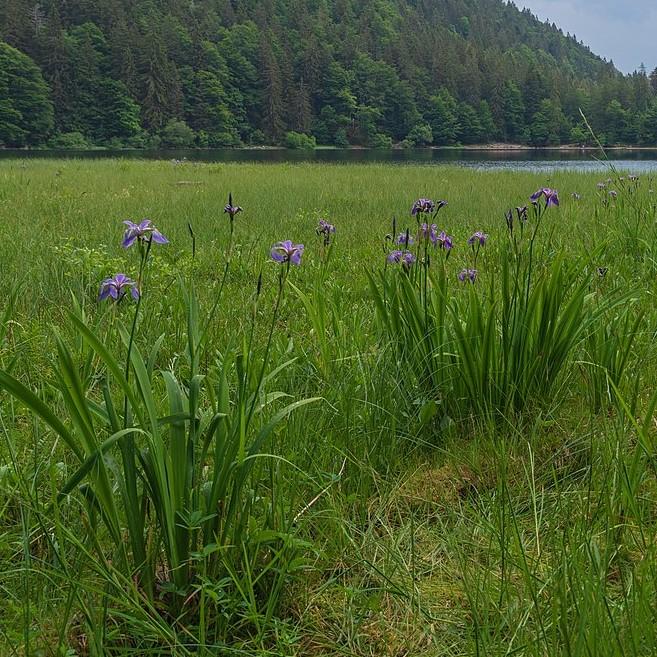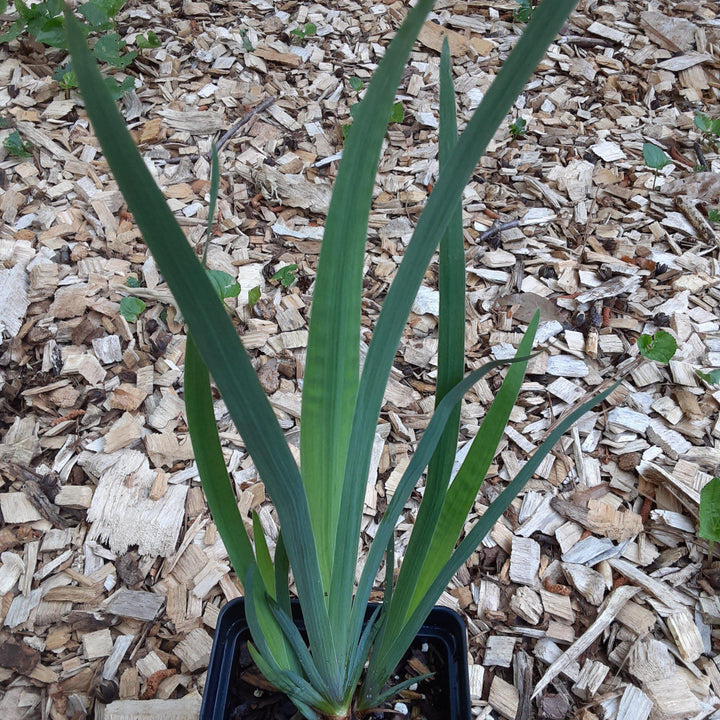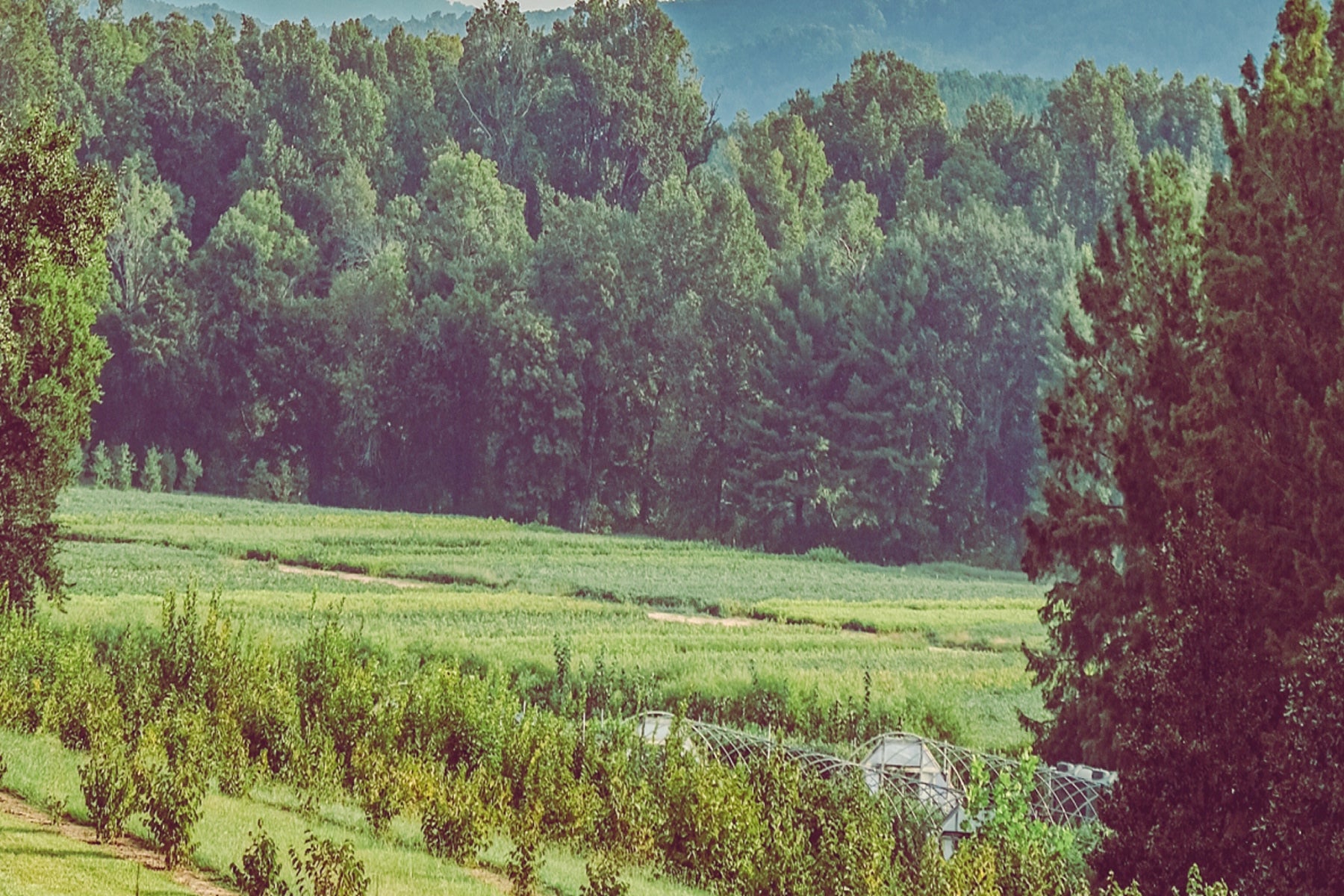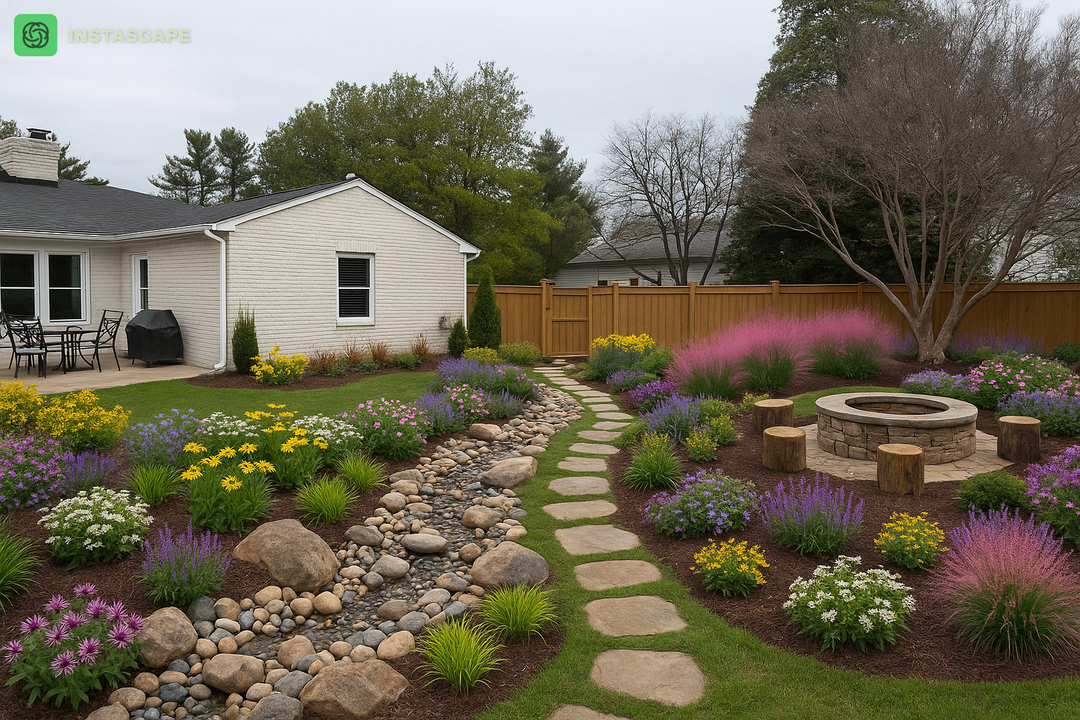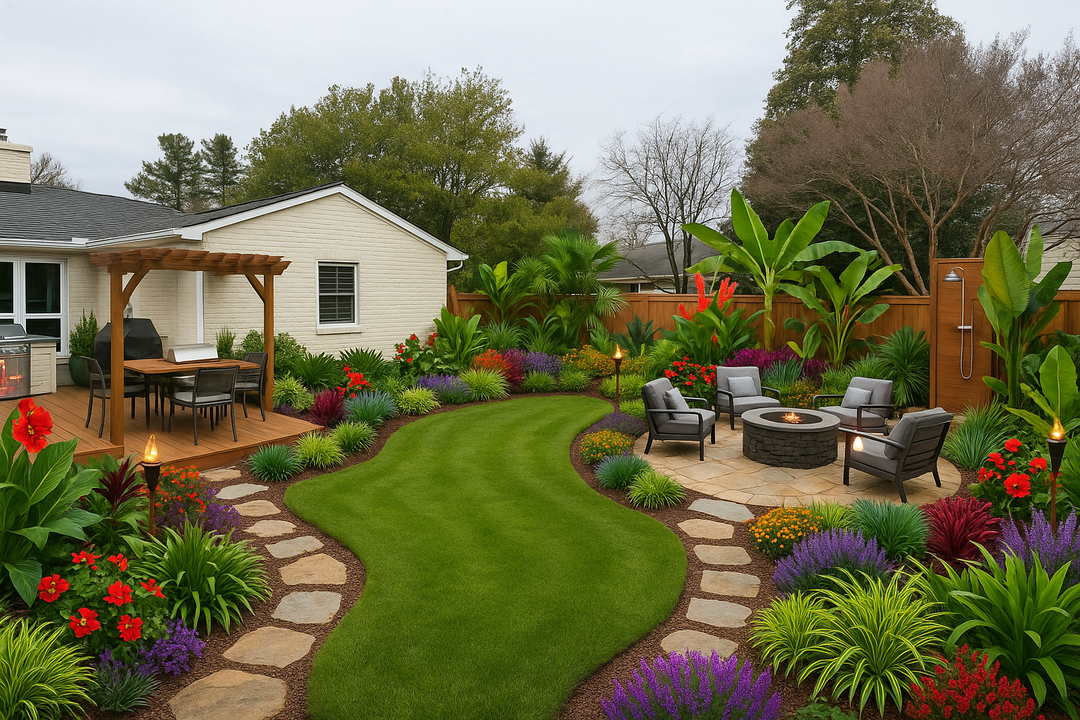Northern Blue Flag Iris is a marginal deciduous perennial with a clumping habit. The long blue-green sword-like foliage is erect and lightly arched. Long sturdy stalks grow from the center of the plant and are topped with soft bluish-purple flowers with deep purple veining and a central yellow splotch surrounded by a white zone in summer, attracting bees. Grows best in rich, slightly acidic, moist to wet water-retentive soils.
Iris versicolor is pollinated by various types of bees but is still a good food source for butterflies and highly attractive to hummingbirds.
|
Type: |
|
|
Origins: |
Northeast US and Canada |
|
Height: |
2' - 2.5' |
|
Spread: |
2’ - 2.5' |
|
Spacing: |
2’ |
|
USDA Hardiness Zone: |
3 - 9 |
|
Culture: |
|
|
Bloom Color: |
Purple |
|
Season of Interest: |
MAINTENANCE NEEDS: Medium Maintenance. Water regularly, then occasionally once established. Can cut back any dying foliage after flowering. In winter, it is intolerant of wet or boggy soils- the roots may rot- move to dryer ground for fall and winter.
LANDSCAPE USES: Accents or Group Plantings, Borders, Woodland Gardens, Water Gardens, Ponds and Streams, Naturalized Areas, Foundation Plantings, and Containers.
COMPANION PLANTS: Joe Pye Weed, Spiderwort, Turtlehead
IMAGES: Photo by Bob Gutowski, Iris versicolor, (2) Photo by John Munt, blue-flag-iris, (3) Jean-Pierre Guillet, Iris versicolor au parc national du Bic, CC BY-SA 4.0, (4) Ryan Hodnett, Northern Blue Flag (Iris versicolor) - Algonquin Provincial Park, Ontario, CC BY-SA 4.0, (5) PantaRhei, Feldberg (Schwarzwald) - Naturschutzgebiet Feldberg (Black Forest) - Bild 3 Feldsee, CC BY-SA 4.0
*As plants have ranges in appearance they may not appear as the images shown.

